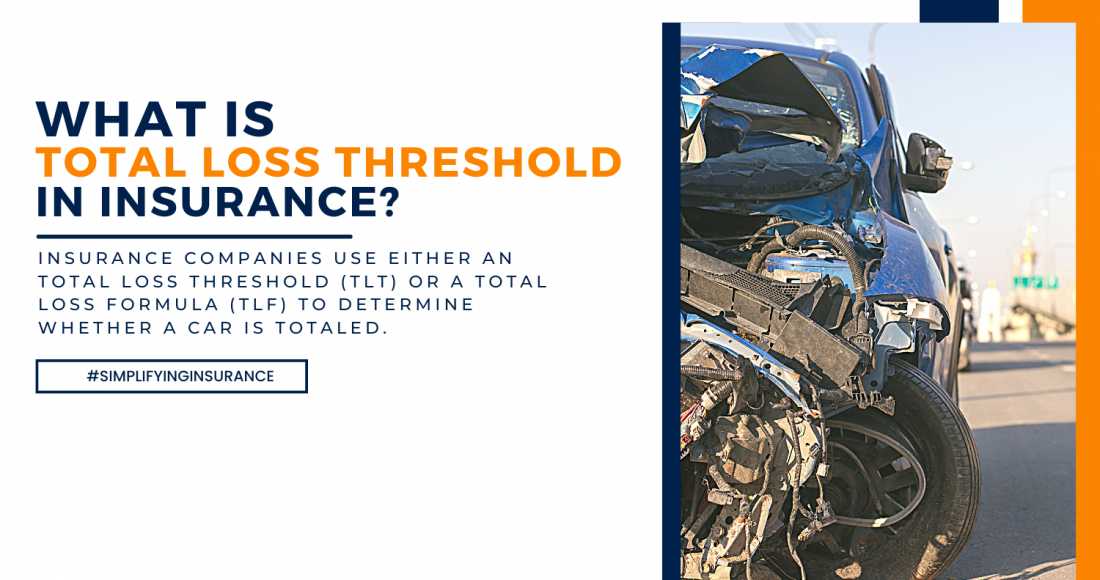A vehicle that suffers significant damage and cannot be repaired may be considered a total loss by your insurance provider. Insurance companies use either an Total Loss Threshold (TLT) or a Total Loss Formula (TLF) to determine whether a car is totaled.
What Is Total Loss?
Damaged cars become total losses when the cost of repairing the damaged car is greater than the car’s worth. This damage may result from theft, accidents, or a natural disaster. As soon as your vehicle leaves the dealer’s lot, its value depreciates. Insurers have different methods for determining a car’s value when damaged; this is known as the car’s actual cash value (ACV). The insurance company checks several factors when calculating the ACV value, including age, mileage, condition, and the price of identical cars in the area. A gap insurance policy pays the gap between the actual cash value of your vehicle and your lender’s loan balance when you’re paying off a loan on a totaled car.

How Insurance Companies Determine Whether a Car Is “Totaled”
It is not straightforward to determine what constitutes a total loss, and the method used by each company differs. A totaled vehicle is determined by insurance companies using two different ways:
- Total Loss Threshold (TLT)
- Total Loss Formula (TLF)
Total Loss Threshold (TLT)
The total loss threshold is expressed in the vehicle’s market value. To determine if the car has been totaled, divide repair costs by the car’s actual cash value. Cars with significant damage may be declared a total loss rather than being repaired if they meet or exceed this threshold. For example, imagine that a vehicle’s ACV is RM10,000 and its repair cost is RM8,000. This vehicle has a total loss threshold of 80 percent (8,001 / 10,000). After a certain percentage is reached, the insurer will declare the car totaled.
Total Loss Formula (TLF)
Another method of determining whether a car is a total loss is to use this formula. It involves the fair market value of the vehicle less its salvage value. Insurers add the repair costs to the vehicle’s salvage value. A total loss is declared when the sum exceeds the vehicle’s ACV. For example, consider a car whose salvage value is RM2,000, and its repair cost is RM5,000. An insurer will pay for the repairs if the ACV of the vehicle is RM8,000 (RM2,000 + RM5,000 = RM7,000, which is less than the RM8,000 ACV).

When Your Vehicle Is Considered a Total Loss, What Should You Do?
If your insurance company tags your vehicle as a total loss and you don’t want to dispute the claim, there are a few things to know about the process. Additionally, you should contact the leasing company to let them know it has been totaled if you are leasing your vehicle. You should take the following steps if your car has been declared a total loss.
- Take off the license plates.
- Remove personal belongings.
- It is best if you surrender the keys to your claims adjuster.
- Completing the paperwork is necessary.
Final Thought
Having total loss coverage is a good idea if you have no alternative to using your vehicle and cannot afford to replace it on your own in a total loss. Losing a car can also result in an income loss for many people. When this happens, full loss insurance becomes essential.





